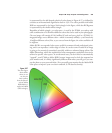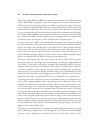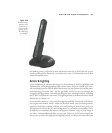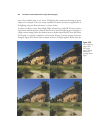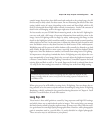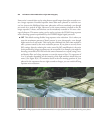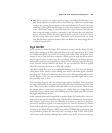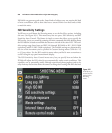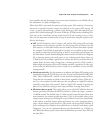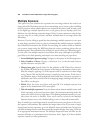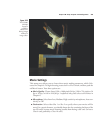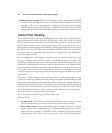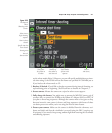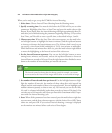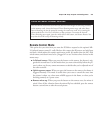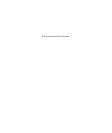been carefully selected. Fortunately, you can set some boundaries so the D7000 will use
this adjustment in a fairly intelligent way.
When Auto ISO is activated, the camera can bump up the ISO sensitivity, if necessary,
whenever an optimal exposure cannot be achieved at the current ISO setting. Of
course, it can be disconcerting to think you’re shooting at ISO 400 and then see a
grainier ISO 1600 shot during LCD review. While the D7000 provides a flashing ISO-
Auto alert in the viewfinder and top-panel status LCD, the warning is easy to miss.
Here are the important considerations to keep in mind when using the options avail-
able for this feature:
■ Off. Set ISO Sensitivity Auto Control to off, and the ISO setting will not budge
from whatever value you have specified. Use this setting when you don’t want any
ISO surprises, or when ISO increases are not needed to counter slow shutter speeds.
For example, if the D7000 is mounted on a tripod, you can safely use slower shut-
ter speeds at a relatively low ISO setting, so there is no need for a speed bump. On
the other hand, if you’re hand-holding the camera and the D7000 set for Program
(P) or Aperture-priority (A) mode wants to use a shutter speed slower than, say,
1/30th second, it’s probably a good idea to increase the ISO to avoid the effects of
camera shake. If you’re using a longer lens, a shutter speed of 1/125th second or
higher might be the point where an ISO bump would be a good idea. In that case,
you can turn the ISO Sensitivity Auto Control on, or remember to boost the ISO
setting yourself.
■ Maximum sensitivity. Use this parameter to indicate the highest ISO setting you’re
comfortable having the D7000 set on its own. You can choose from ISO 400, 800,
1600, 3200, 6400 and Hi 1 and Hi 2 as the max ISO setting the camera will use.
(Note that the increments are fixed at those listed, regardless of how CSM #b1 is
set.) Use a low number if you’d rather not take any photos at a high ISO without
manually setting that value yourself. Dial in a higher ISO number if getting the
photo at any sensitivity setting is more important than worrying about noise.
■ Minimum shutter speed. This setting allows you to tell the D7000 how slow the
shutter speed must be before the ISO boost kicks in, within the range 1 second to
1/4,000th second. The default value is 1/30th second, because for most shooters in
most situations, any shutter speed longer than 1/30 is to be avoided, unless you’re
using a tripod, monopod, or looking for a special effect. If you have steady hands,
or the camera is partially braced against movement (say, you’re using that mono-
pod), a slower shutter speed, down to 1 full second, can be specified. Similarly, if
you’re working with a telephoto lens and find even a relatively brief shutter speed
“dangerous,” you can set a minimum shutter speed threshold of, say, 1/250th sec-
ond. When the shutter speed is faster than the minimum you enter, Auto ISO will
not take effect.
Chapter 8 ■ Setup: Playback and Shooting Menus 267



